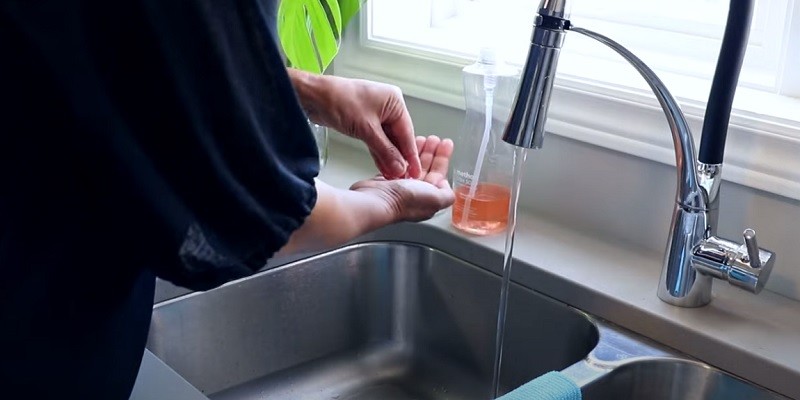How To Remove Epoxy From Skin?
Last Updated on June 18, 2025 by Jaclyn A. Neeley
Epoxy adhesives and resins are widely used in various DIY projects, industrial applications, and home repairs due to their strong bonding properties. However, accidents can happen, and you might find yourself with epoxy on your skin. Removing epoxy from the skin promptly and safely is crucial to avoid irritation or allergic reactions. This article provides a comprehensive guide on how to remove epoxy from the skin using various methods.
Epoxy and Its Effects on Skin
Epoxy is a two-part adhesive consisting of a resin and a hardener. When mixed, these components create a strong, durable bond. However, epoxy can be an irritant and cause skin inflammation, contact dermatitis, or even burns if not handled properly. It is essential to remove epoxy from the skin before it cures, as it becomes more challenging to remove once hardened.
Preventive Measures
Before diving into removal techniques, it’s important to highlight preventive measures to avoid getting epoxy on your skin in the first place:
- Wear Gloves: Use nitrile or vinyl gloves, as they provide better protection against epoxy compared to latex gloves.
- Long Sleeves and Protective Clothing: Wear long sleeves and old clothes or a disposable Tyvek jacket to protect your arms and body.
- Work in a Well-Ventilated Area: Ensure proper ventilation to avoid inhaling fumes, which can also cause irritation.
Methods to Remove Epoxy from Skin
Soap and Water
The simplest and often most effective method to remove uncured epoxy from the skin is using soap and water.
- Step 1: Wash the affected area with warm, soapy water.
- Step 2: Use a cloth or sponge to gently rub the epoxy off your skin.
- Step 3: Rinse thoroughly with warm water.
This method works best if the epoxy has not yet cured. It is recommended to wash your hands immediately after contact to prevent the epoxy from hardening.
Vinegar
Vinegar is a mild solvent that can help soften epoxy, making it easier to remove.
- Step 1: Soak a cloth or cotton ball in vinegar.
- Step 2: Gently rub the affected area with the vinegar-soaked cloth.
- Step 3: Once the epoxy softens, peel it off or wash it away with soap and water.
Vinegar is effective for both uncured and cured epoxy but should be used with caution as it can cause skin irritation in some individuals.
Citrus-Based Hand Cleaners
Citrus-based hand cleaners, such as those containing d-limonene, are effective in removing epoxy from the skin.
- Step 1: Apply a generous amount of citrus-based hand cleaner to the affected area.
- Step 2: Rub the cleaner into the skin using a cloth or your fingers.
- Step 3: Rinse the area with warm water and soap.
These cleaners are gentle on the skin and can be found in most home improvement or auto parts stores.
Acetone
Acetone, commonly found in nail polish remover, can be used to remove epoxy, but it should be used with caution due to its harshness.
- Step 1: Soak a cloth or cotton ball in acetone.
- Step 2: Rub the affected area gently until the epoxy softens and can be peeled off.
- Step 3: Wash the area with soap and water to remove any acetone residue.
Ensure you are in a well-ventilated area when using acetone, and avoid prolonged contact with the skin to prevent irritation.
Exfoliating Scrubs
Exfoliating scrubs, such as sugar or salt scrubs, can help remove epoxy by gently abrading the skin.
- Step 1: Mix a small amount of sugar or salt with a carrier oil (e.g., olive oil, coconut oil).
- Step 2: Apply the scrub to the affected area and rub gently.
- Step 3: Rinse with warm water and soap.
Exfoliating scrubs are effective and gentle, making them suitable for individuals with sensitive skin.
Post-Removal Care
After successfully removing the epoxy from your skin, it is essential to take care of the affected area to prevent irritation or allergic reactions.
- Moisturize: Apply a soothing hand cream or lotion to keep the skin hydrated.
- Monitor for Reactions: Watch for any signs of irritation, redness, or swelling. If these symptoms occur, seek medical advice.
- Avoid Harsh Chemicals: Refrain from using harsh chemicals or solvents on the skin, as they can cause further irritation.
Safety Tips for Working with Epoxy
To minimize the risk of getting epoxy on your skin, follow these safety tips:
- Read Manufacturer’s Instructions: Always follow the safety guidelines provided by the epoxy manufacturer.
- Use Personal Protective Equipment (PPE): Wear gloves, long sleeves, and safety glasses to protect your skin and eyes.
- Keep a Clean Work Area: Organize your workspace to avoid accidental spills and ensure easy access to cleaning supplies.
Conclusion
Removing epoxy from the skin can be straightforward if you act quickly and use the appropriate methods. Soap and water, vinegar, citrus-based hand cleaners, acetone, and exfoliating scrubs are all effective techniques for removing epoxy. Always prioritize safety by wearing protective gear and working in a well-ventilated area. If you experience any adverse reactions, seek medical attention promptly. By following these guidelines, you can safely and effectively remove epoxy from your skin and continue your projects with confidence.
FAQs
What happens if epoxy gets on your skin?
If epoxy gets on your skin, it can cause irritation, redness, and inflammation. In some cases, it may lead to an allergic reaction or sensitization, resulting in a rash, itching, or even blisters. Uncured epoxy can also cause chemical burns if left on the skin for an extended period. It’s crucial to remove epoxy from the skin as soon as possible to prevent further irritation or long-term effects.
Does rubbing alcohol remove epoxy?
No, rubbing alcohol (isopropyl alcohol) is generally not recommended for removing epoxy from the skin. Alcohol can cause the epoxy to penetrate deeper into the skin, potentially leading to more severe reactions or sensitization. Instead, use soap and warm water, or a citrus-based hand cleaner specifically designed for removing epoxy and other resins from the skin.
Will acetone remove epoxy from the skin?
Yes, acetone can effectively remove uncured or partially cured epoxy from the skin. However, it should be used with caution as acetone can dry out and irritate the skin. It’s recommended to use acetone sparingly and follow up with a moisturizer after removing the epoxy. Avoid using acetone on cured epoxy, as it may not be effective and could cause further skin irritation.
What dissolves epoxy?
Several solvents can dissolve or soften epoxy, including acetone, methyl ethyl ketone (MEK), methylene chloride, and toluene. However, these solvents are generally harsh and should be used with proper safety precautions, such as adequate ventilation and personal protective equipment. Citrus-based cleaners or vinegar can also help dissolve or loosen epoxy from surfaces, but they may not be as effective as stronger solvents.
What are the common causes of epoxy exposure on the skin
The most common causes of epoxy exposure on the skin include not wearing proper protective equipment (gloves, long sleeves, etc.), accidental spills or splashes during mixing or application, and improper cleanup or handling of epoxy materials. Failure to follow safety protocols, lack of ventilation, and poor housekeeping practices can also increase the risk of skin exposure to epoxy resins and hardeners.







